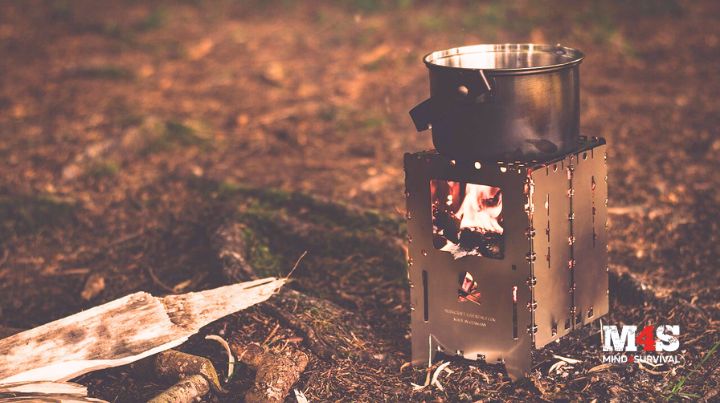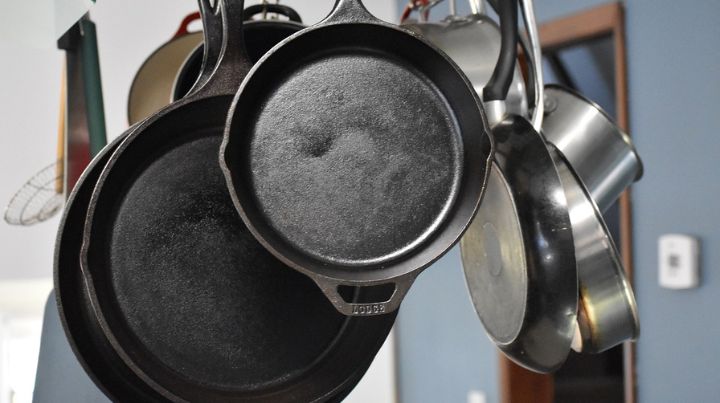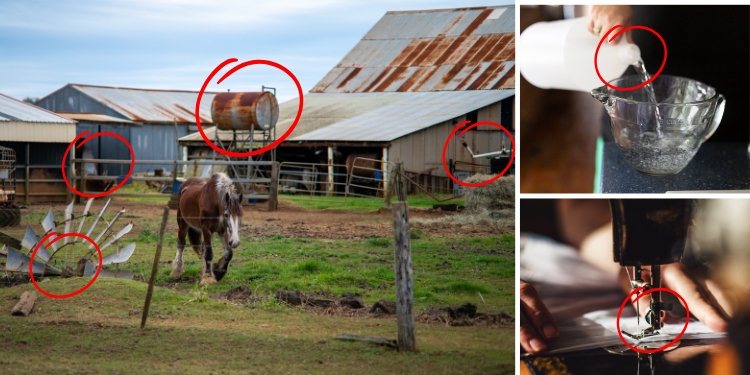It’s Chow Time: How to Cook Off-Grid

If the grid goes down for a couple of hours, it’s usually not a big deal. But if the outage goes on for a day or more, you might be looking to make more than dry cereal for lunch or dinner. Fortunately, there are several options for off-grid cooking. As a bonus, you probably have one or more of them on hand already.
Quick Look at What You’ll Learn
Grill
One of the most common solutions is to fire up your patio grill. Whether it’s charcoal or propane, it’ll get the job done, provided you have fuel. There are a few things to keep in mind with this approach.
Most grid-down meals will probably consist of heating canned goods or boiling water to rehydrate freeze-dried or dehydrated foods. While that’s easy enough to accomplish with a grill, it isn’t the most efficient solution. There’s a lot of heat energy that’s going to be wasted, particularly if you’re using charcoal. With a gas grill, you could just use one burner, but with charcoal, you don’t have that option. Whenever possible, make as much use of the grill as you can each time you light it. For example, heat soup in one pot and water for cleaning in another at the same time.
Patio Fire Pit
These have become very common. Cooking over one of these is very much like cooking over a traditional campfire. While many of them aren’t designed to be used in this manner, you could repurpose a grate from your oven so you have a place to set your pot or pan. Incidentally, this is why we kept the grates from our old oven when we replaced it.
Any time of open-fire cooking like this takes practice, as there’s just as much art as there is skill involved. Boiling water is one thing, actually cooking food is another. Again, you’ll probably be doing a lot more of the former than the latter, but y’know what? Open-fire cooking is a lot of fun to practice anyway.
Camp Stoves
These come in several different styles, and all of them require fuel. This isn’t a deal-breaker, of course, but it is something to consider if you’re counting on using it in emergencies.
Some models look very similar to small stovetops, while others consist of a single burner that sits on top of the fuel canister. These aren’t all that expensive, even when you consider the fuel, and they store easily at home.
Rocket Stoves
This is a small wood-burning stove that is very efficient and gets very hot. It uses small-diameter sticks for fuel rather than larger branches and logs. The stove is designed so that fuel is added to the bottom, and cooking takes place at the top of the combustion chamber.
There are many different rocket stoves on the market today. Most of them are very heavy-duty, and you aren’t going to want to lug them around a lot. But this is an excellent option for those living in an area not adjacent to a ready supply of large firewood. Just keep a good supply of small sticks and branches, and you’ll be good to go.
Solar Ovens
These can be store-bought or homemade. Their biggest advantage is that no fuel is needed, just sunshine. However, one of their biggest drawbacks is that they can’t be used at night. They can work on cloudy days, but they’re certainly not as efficient.
These work by trapping the sun’s energy and concentrating it on your cooking vessel. This works best if you can move the oven periodically so it is in full sunlight. This isn’t a quick-cook solution, though. It can take a few hours or more to get your food done. But it’s a great option if you can just let it work while you’re doing other things.
These aren’t difficult to make at home with just some aluminum foil, tape, and a cardboard box. Here’s one set of instructions, but you can find a ton more searching online. [https://www.wired.com/story/how-to-build-a-solar-oven/]
Haybox Cooking
This is a lesser-known approach, but it’s great in some circumstances. What you do is bring your food up to cooking temperature, then cover the pot and place it into an insulating container. The food will continue to cook for several hours without requiring additional heat. One big advantage to this method is that you can heat the food outside on the grill or whatever, then bring it inside to sit until it’s done and you’re ready to eat.
If you want a purpose-built solution along these lines, consider the Wonderbag. It’s proven to be rather popular in many circles and works well. You can also find plans to make your own version of one online.
Haybox cooking has been used for centuries. This method conserves fuel, as it only heats for a short period of time. However, if you let food sit for too long at lower temperatures (under 140F), you risk bacterial growth. This can be at least partially mitigated by bringing the food back up to a boil before consuming it.
Cookware
Typical kitchen cookware isn’t going to hold up well for many of these methods, particularly the ones that involve high heat and flame, like the grills or rocket stoves. Plastic handles will melt, and the thin metal pans may warp.
Cast iron works great, but if you don’t use it, you might consider investing in a small set of camp cookware. You don’t need much. You can find sets online or at sporting goods stores that don’t cost a ton of money but will work well in any grid-down emergency. Plus, you won’t risk the wrath of the family cook when you show them their favorite pot now looks like a wax sculpture that was left in the sun.
Practice Makes Perfect
As with any survival or preparedness gear, it’s important to get some practice with it before it’s actually needed. Learn the little quirks it might have and ensure you have everything you need. If you’re not a family who is already well experienced with camping and such, you might consider preparing off-grid meals on a regular basis, say once or twice a month.
Read the full article here










